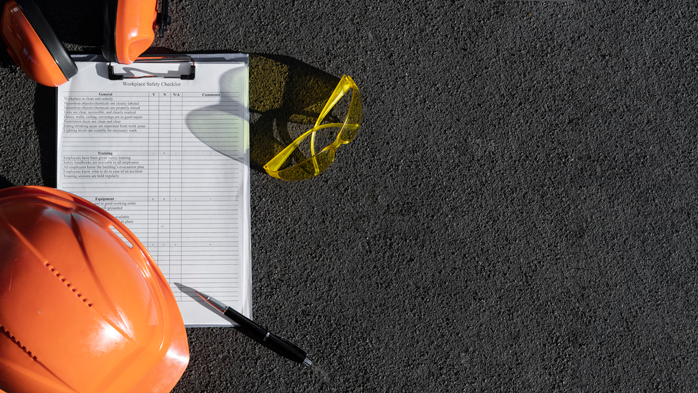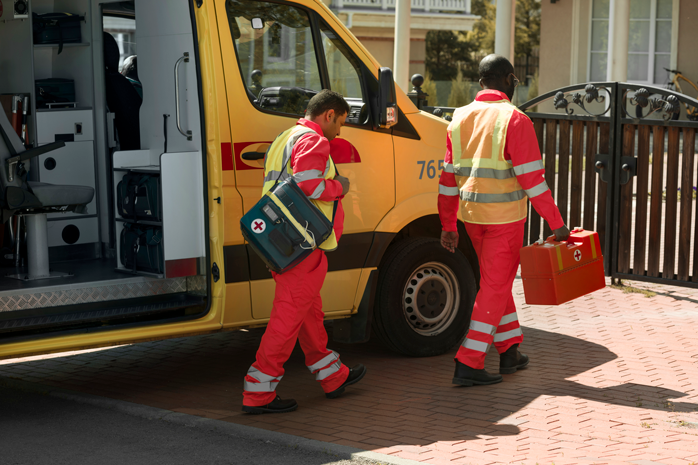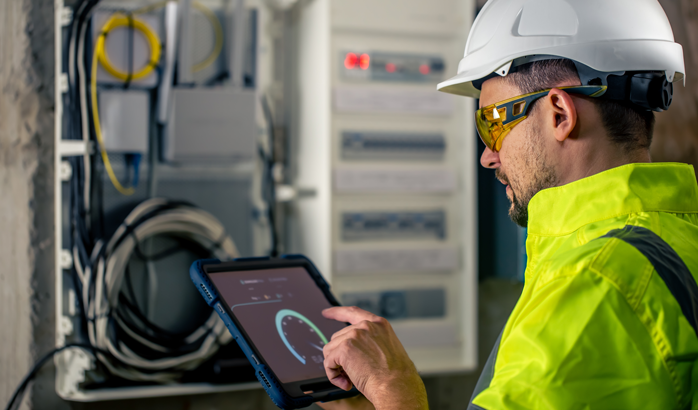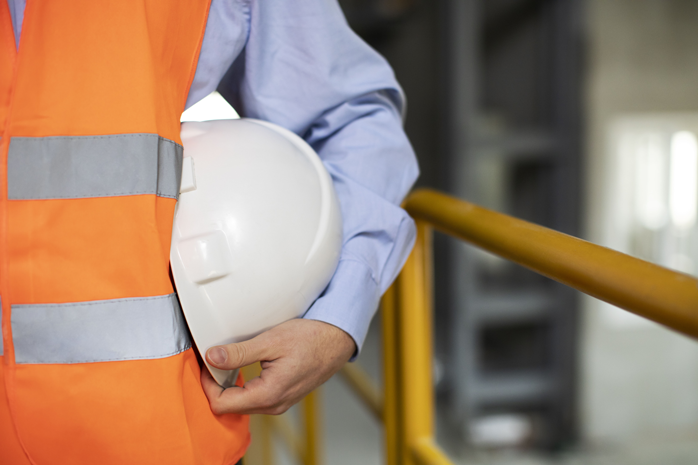Can Predictive Analytics Make Workplace Accidents a Thing of the Past?
Contents:
-
The Power of Prediction: How Data Speaks Safety
-
From Reactive to Proactive: A Shift in Safety Culture
-
Addressing the Human Element in Workplace Safety
-
How Predictive Analytics is Reshaping Industries
-
The Role of AI in Powering Predictive Analytics
-
Overcoming Barriers: Building Trust in Predictive Systems
-
Embrace Predictive Analytics for a Safer Workplace

The construction site was buzzing with activity. Workers maneuvered heavy machinery, scaffolding rose high, and the hum of productivity filled the air. Then, without warning, a crane faltered. What could have been a catastrophic accident was avoided thanks to predictive analytics. The system had flagged the equipment’s maintenance needs days earlier, allowing the team to address the issue in time.
This isn’t just a glimpse into the future—it’s the reality of how predictive analytics is transforming workplace safety. By analyzing historical data and identifying patterns, these systems can predict potential hazards before they happen, saving lives and reducing downtime. In this blog, we’ll explore the role of predictive analytics in revolutionizing safety management, making workplaces safer and more efficient.According to a report by Forbes In 2018, more than 5,000 workers in the U.S. died at their workplace. In the same year, the expenses on occupational injuries and accidental deaths in the U.S. amounted to almost $171 billion according to the National Safety Council. To protect employees’ health and well-being, companies have to transform workspaces and take care of their employees. When combined with other related technologies, AI is able to augment the human workforce, allowing EHS professionals to proactively manage various EHS risks and create a safe workplace environment for employees.
The Power of Prediction: How Data Speaks Safety
Consider a manufacturing plant running at full capacity every day. A sensor on one of the assembly line motors picks up an unusual vibration. It’s subtle, something that might not even be noticed by a human supervisor. However, predictive analytics identifies this anomaly, cross-references it with historical data, and flags it as a potential risk. Maintenance teams intervene early, preventing a costly breakdown and ensuring workers remain safe.
Predictive analytics turns data into a powerful tool for workplace safety. By leveraging machine learning, real-time monitoring, and data modeling, these systems detect trends that might otherwise go unnoticed. It could be equipment performance, workplace incidents, or even environmental conditions—everything feeds into the system, generating actionable insights.
A study by PwC highlights that predictive analytics can uncover previously unseen drivers of workplace accidents, enabling companies to address safety more effectively in terms of both injury prevention and management.
From Reactive to Proactive: A Shift in Safety Culture
For decades, workplace safety strategies revolved around reacting to incidents after they occurred. Take the story of a logistics company dealing with frequent forklift collisions in its warehouses. After each accident, safety protocols were reviewed, but the incidents persisted. It wasn’t until predictive analytics flagged collision hotspots using location data and near-miss reports that effective measures—like enhanced visibility and better traffic control—were implemented.
This shift from reactive to proactive safety management represents a cultural transformation. Predictive analytics empowers organizations to anticipate risks and take preventive measures before accidents occur. This approach not only saves lives but also fosters a safety-first mindset, where both employees and management actively participate in creating a secure work environment.
Proactivity also improves employee morale. When workers see their safety being prioritized through advanced tools, trust in management grows. Predictive analytics isn’t just about avoiding incidents; it’s about creating a workplace where safety is a shared responsibility.
Addressing the Human Element in Workplace Safety
On a busy manufacturing floor, an operator skips a safety protocol to meet a looming deadline. It’s not intentional negligence, it’s the pressure of the moment. Predictive analytics can tackle human factors like these, spotting trends such as repeated shortcuts, signs of fatigue, or patterns of unsafe behavior.
Human error is a leading cause of workplace accidents. However, instead of placing blame, predictive systems offer actionable recommendations to mitigate risks. By analyzing data on employee behaviors, workloads, and even environmental conditions, these tools can suggest solutions whether it’s rescheduling shifts, providing additional training, or redesigning workflows to reduce pressure points.
For instance, a healthcare facility used predictive analytics to monitor nurse fatigue during extended shifts. The system identified critical hours when errors were most likely, prompting managers to adjust staffing schedules. The result? Fewer mistakes, improved safety, and better employee satisfaction.
How Predictive Analytics is Reshaping Industries
Predictive analytics is transforming safety protocols across various industries by enabling proactive risk management. Here are some notable examples:
Oil and Gas
In the high-stakes environment of oil and gas, companies like Shell and BP have adopted predictive analytics to enhance safety and operational efficiency. Shell utilizes artificial intelligence and machine learning to predict equipment maintenance needs, thereby reducing operational expenses and mitigating environmental risks associated with equipment failures.
Similarly, BP has partnered with Palantir Technologies to implement AI-driven predictive maintenance, allowing for real-time monitoring and early detection of potential issues, which helps prevent accidents and unplanned downtimes.
Healthcare
In the healthcare sector, predictive analytics is employed to enhance patient care and workplace safety. For instance, SAS has collaborated with institutions like the Cleveland Clinic to develop predictive models that forecast patient volumes and equipment needs. During the COVID-19 pandemic, these models were instrumental in anticipating bed capacity and resource allocation, thereby preventing system overloads and ensuring both patient and staff safety.
Construction
The construction industry, known for its dynamic and hazardous environments, is leveraging predictive analytics to improve safety outcomes. Companies are utilizing AI-driven solutions to monitor equipment health and predict maintenance requirements. For example, Dingo, a predictive maintenance company, specializes in asset health management for heavy industries, including construction. Their Trakka platform combines data analytics and machine learning to predict failures and prescribe maintenance actions, thereby minimizing downtime and enhancing safety.
The Role of AI in Powering Predictive Analytics
An AI-powered system scans thousands of incident reports, sensor readings, and maintenance logs in moments, uncovering patterns and insights that might take humans weeks to identify. It doesn’t just analyze data, it evolves with it, sharpening its ability to predict risks and prevent accidents with every new piece of information.
Platforms like VigilantAI exemplify how AI is revolutionizing workplace safety. By analyzing real-time data from sources like CCTV footage, VigilantAI identifies unsafe behaviors and predicts risks based on historical patterns. Its ability to integrate seamlessly with existing systems ensures a proactive, data-driven safety strategy.
This isn’t just about detecting potential hazards—it’s about creating a dynamic system that evolves with your workplace, adapting to new challenges and continuously improving safety outcomes.
Overcoming Barriers: Building Trust in Predictive Systems
Despite its benefits, some organizations remain hesitant to adopt predictive analytics due to concerns about privacy, cost, and employee resistance. Addressing these barriers is key to successful implementation. Transparency is crucial. Employees need to understand how these systems work and how their data will be protected. Providing user-friendly tools and comprehensive training can ease the transition. For example, showing how predictive systems enhance safety rather than monitor productivity fosters trust and acceptance. Additionally, investing in scalable and cost-effective solutions like VigilantAI ensures businesses of all sizes can leverage the power of predictive analytics without straining their budgets.
Embrace Predictive Analytics for a Safer Workplace
Imagine a world where workplace accidents are a rarity rather than an inevitability. Workplace safety isn’t just about compliance; it’s about creating an environment where employees thrive and risks are minimized. Predictive analytics has the power to transform how organizations approach safety, shifting from reactive measures to proactive solutions that save lives, reduce costs, and boost efficiency.
At Code District, we specialize in developing cutting-edge AI-powered solutions like VigilantAI, designed to revolutionize safety management. From analyzing real-time data to predicting risks and preventing accidents, VigilantAI integrates seamlessly into your existing systems to provide actionable insights and foster a safety-first culture.
Ready to take the next step toward smarter, safer workplaces? Contact us today to learn more about VigilantAI and how Code District can help you implement predictive analytics tailored to your organization’s unique needs. Let’s build a safer tomorrow, together.




